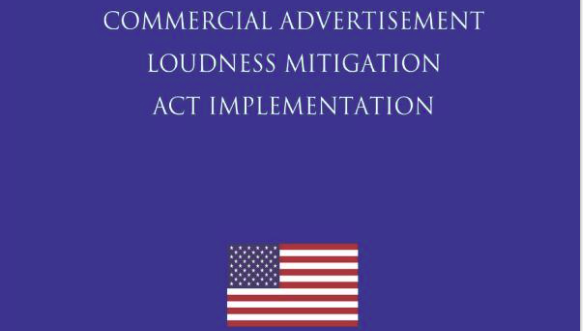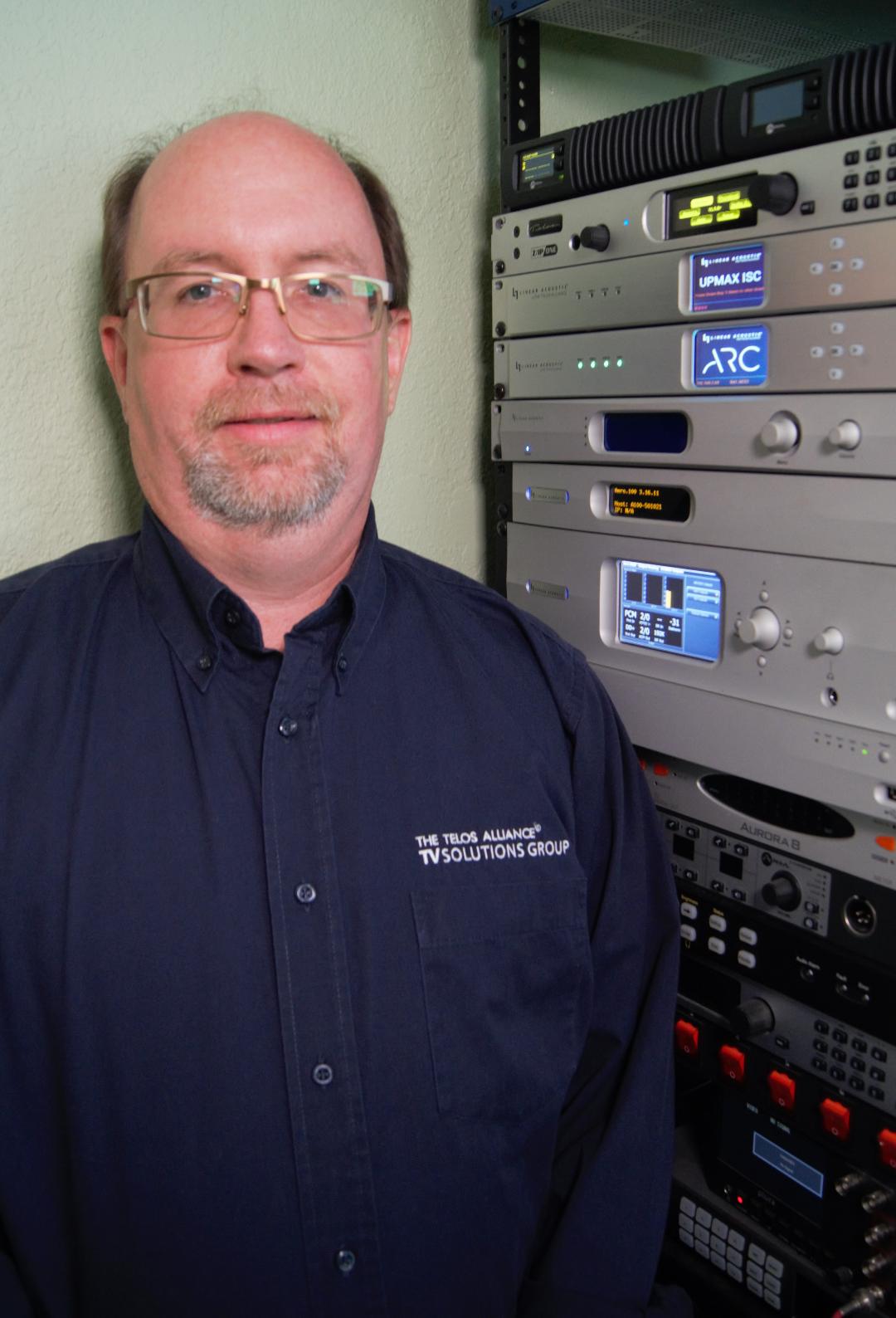Audio Loudness Waters Are a Little Less CALM Than Before
Streaming is disrupting the dynamic balance between commercial- and program-audio levels
Story Highlights
Once again, the volume of complaints about loud television commercials is rivaling the volume of the blaring blurbs themselves. In the four months from November 2020 to February 2021, complaints to the Federal Communications Commission about loud commercials more than doubled, up 140% compared with the same period a year earlier. That has precipitated a congressional call to have another look at the matter.
 A dozen years ago, the CALM Act set out to mitigate one of the banes of modern broadcast media: annoyingly loud commercials. Specifically, the Commercial Advertisement Loudness Mitigation Act directed the FCC to establish rules that would require TV stations, cable operators, satellite-TV providers, and other multichannel video program distributors to apply the ATSC’s A/85 Recommended Practice (ATSC A/85 RP) to commercials they broadcast to viewers, in order to prevent that audio from being louder than the program material.
A dozen years ago, the CALM Act set out to mitigate one of the banes of modern broadcast media: annoyingly loud commercials. Specifically, the Commercial Advertisement Loudness Mitigation Act directed the FCC to establish rules that would require TV stations, cable operators, satellite-TV providers, and other multichannel video program distributors to apply the ATSC’s A/85 Recommended Practice (ATSC A/85 RP) to commercials they broadcast to viewers, in order to prevent that audio from being louder than the program material.
New Version of CALM Act
Now a proposed revision of the CALM Act, the CALM Modernization Act, proposed by Sen. Sheldon Whitehouse (D-RI) and Rep. Anna G. Eshoo (D-CA) in May, is intended to update the Act as follows:
- Modify the 2010 CALM Act’s safe harbor to a rebuttable presumption based on whether a provider uses appropriate equipment and software to moderate volume; the number and pattern of complaints the FCC receives about the provider; and other factors.
- Direct the FCC to promulgate regulations limiting the volume of ads on ad-supported TV-streaming services similar in effect to the regulations for traditional TV.
- Enable the FCC to enforce violations of the legislation as it would enforce other violations of the Communications Act.
- Direct the General Accounting Office to submit a report to Congress analyzing the effectiveness of the CALM Act in moderating loudness, evaluating enforcement provisions of the law, and recommending policy solutions to better moderate loudness.
“New ways to watch TV shouldn’t mean new ways for corporations to blare ads at outrageously high volumes,” Whitehouse said in a prepared statement. “It’s time to update our CALM Act to address the uptick in streaming and to boost enforcement of existing rules against loud commercials. I’m glad to partner with Congresswoman Eshoo to help annoyed TV watchers everywhere. We’ve all had enough.”
In fact, the updated legislation’s sponsors argue, in the years since its enactment, the FCC has never enforced the law despite having the authority to do so and, in that time, has sent only two letters of inquiry, even though it continues to receive thousands of consumer complaints per year.
In some ways, the requirements of the CALM Act produced a major change in workflow for broadcasters by shifting the metrics from audio peak normalization to loudness normalization. However, acceptance and application of the CALM Act was relatively quick and smooth; in many cases, it was welcomed by broadcasters for its clarity and accelerated by a growing subsector of products aimed at more precisely measuring and managing broadcast-audio loudness. As for infractions of the regulation, the CALM Act didn’t provide specific penalties against broadcasters, although it did provide a one-year grace period for implementation of the appropriate equipment and a safe-harbor provision for broadcasters who did. It also subjected cable operators to the same regulations as the FCC’s traditional bailiwick of over-the-air broadcasters. A broadcaster or distributor is considered in compliance as long as it installs and uses suitable equipment and software for loudness monitoring and management.
However, although the Act did initially reduce the number of loudness complaints from consumers, complaints have begun to ratchet up in recent years. Much of that is a result of the growth of streaming, which wasn’t addressed in the original CALM Act, and that has created an entirely new universe of potentially loud media.
Meters and Metrics
Manufacturers of loudness-monitoring and -management systems say they’re ready for any modifications to CALM.

Nugen Audio’s Charles Blessing: “The -24 standard [used in the CALM Act] wasn’t adequate for the shift to mobile devices.”
“ITU-1770-4 provided for different [loudness] targets for streaming applications: -16 vs. the -24 used for the CALM Act,” he explains, referencing the LKFS (loudness, K-weighted/full-scale) metric used to measure loudness over the whole of the program. “The -24 standard wasn’t adequate for the shift to mobile devices. It wasn’t loud enough to let them be heard in noisy environments. Our products have algorithms that can adjust for the type of content and environment.”
Blessing says audio specifications for both Netflix and Disney+ use the -27 target successfully, with many viewers watching on the same television platforms they use for broadcast and cable viewing. Both streaming services are also applying Dolby Dialog Intelligence Gating at -27 LKFS. Amazon Prime Video doesn’t publicly share its audio technical requirements.
UK-based Blessing sits on the EBU’s Ploud group, which established the EBU R 128 Loudness Recommendation to create a common, vendor-independent and relatively simple way to measure loudness. The group released its streaming-loudness specification, EBU R-128 S2, in June 2021, which recommended that content be distributed at -23 LKFS where possible or up to -16 LKFS where required. However, as streaming services incorporate commercials into their streams — for instance, lower-priced, advertising-supported subscription tiers may become available to Netflix users in the fourth quarter — streamed content may begin to experience the same disparity between program and commercial audio.
In fact, streaming media faces another, unique challenge when it comes to ads. Although broadcasters (and the FCC) can rely on commercial-audio producers to align with CALM Act requirements, online ads are programmatically inserted, meaning that local user data will pull in ads aimed at an individual viewer rather than across the board as they are in broadcast. That complicates the loudness issue, since the content will come from a vastly broader range of sources, some of which might pay less attention to the parameters of audio, such as volume, than others.

Linear Acoustics’ Larry Schindel: “Streaming services are growing at an incredible rate. So the problem could get bigger.”
According to Linear Acoustics Product Manager Larry Schindel — who oversees loudness-monitoring and -management products, including the AERO.10, AERO.100, and LA-5300 processors — the largest of the streaming services have the technical capabilities and engineering awareness to address the issue of loudness on streamed content.
“The bigger ones seem to have it under control,” he says. “It’s more likely to be a problem with user-generated streaming sites, like YouTube. Streaming services are growing at an incredible rate and already account for the majority of consumer IP traffic, so the problem could get bigger.”
Schindel says the loudness of streaming content can be addressed at the server stage, before it’s integrated into an online stream. He cites AudioTools software from Minnetonka Audio Software (like Linear Acoustic, another Telos Alliance brand) that can normalize loudness of audio files before being sent to playout.
Broadcasters are aware of impending changes to the CALM Act, but most expect that integrating those updates will be straightforward.
“NBC Sports are very aware of the new legislation to update the CALM Act for streaming services,” says Karl Malone, director, sound design, NBC Sports and NBC Olympics. “As broadcasters, of course we are and have been successfully fulfilling our obligations in that direction. Our streaming broadcast production has the same technical broadcast parameters as our linear production. Obviously, now there is more focus on streaming and commercial integration with the introduction of this new bill last month. I have no doubt everybody will come into line once we investigate where we might have some work to do.”
But the larger issue of broadcast loudness is deeply rooted; more “energetic” commercials are more likely to be tuned in more or avoided less by viewers, according to a 2022 Notre Dame study, one of many that underscore why television commercials have been so loud for so long in the first place.
In fact, says Linear Acoustics’ Schindel, many if not most broadcasters are mixing to the same loudness level that commercials are regulated to, mixing their audio slightly hotter to more closely match that of the commercials. “It has always been a bit of whack-a-mole game.”
